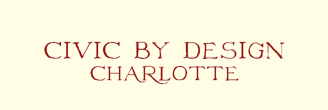
Innovator Tom Low elevates the quality of our built environment through his Civic By Design forum, integrates sustainability with community design through Light Imprint, advocates for better school campuses through Learning Cottages and engages communities through hands-on design collaboration with MIXOPOLY.
Innovating
in
URBAN DESIGN
An internationally recognized award winning leader in New Urbanism, Tom’s urban design work includes plans for new villages, neighborhoods and towns as well as redevelopment plans. Prior to establishing his consulting practice in 2013, Tom served as Partner with DPZ for 21 years, where he opened their Charlotte office in 1995. One of the first in the movement, he pioneered designs for walkable, connected, mixed-income, mixed-use, neighborhood, town, and city design—practices now common. He has conducted over 150 muti-day planning charrettes.
Elevating
the quality of the built environment through the
Civic By Design
FORUM
The Civic By Design Forum was launched in 2005, when local architect Tom Low and the Levine Museum of the New South’s staff historian Tom Hanchett collaborated on an exhibit about John Nolen, planner of Myers Park. Tom Low realized there needed to be a place in Charlotte where we can get people talking to each other about issues that are shaping our city’s history today. Since 2005 Civic By Design has conducted over 120 Forums, led workshops on school design, launched initiatives on Learning Cottages, Pop-Up Porch Parklets, proposals for Sprawl Repair and Urban Triage across the city. The mission of Civic By Design is to elevate the quality of our built environment and to promote public participation in the creation of a more beautiful and functional region for all. We achieve our mission by engaging and uniting businesses, non-profits, academic institutions, municipal governments, and citizens through promotion of civic design including our monthly Forum, charrette workshops, seminars, field trips, and conferences. The Forum is free and open to the public continually active since 2005. The Forum is presented with the Levine Museum of the New South, and is sponsored through partnerships with many organizations. The Forum has had a ripple effect as a national model for civic forums as well as raising the bar on regional growth and development.
Integrating
sustainability with community design through
Light Imprint
Identifying a disconnect between walkable urban design and green infrastructure, Tom Low introduced the Light Imprint Initiative at an Open Space Workshop in conjunction with the Congress of the New Urbanism held in Philadelphia in 2007. Light Imprint is a New Urbanist planning design approach that includes a tool box of techniques to manage stormwater and natural drainage. Interest generated at that workshop grew exponentially. Tom Low began creating Light Imprint overlays for projects in the planning and construction stages. He assembled and led a team of experts to publish a limited edition of the first Light Imprint Handbook in 2007. Following an intensive four-month period of international peer review of the Handbook and the associated web site, the Light Imprint team gathered again in August 2008 to edit and compile version 1.3 of the latest published Light Imprint Handbook: Integrating Sustainability and Community Design. Light Imprint has grown and has had a ripple affect across the urban design, engineering, planning, environmental, green infrastructure and storm water management industries. Tom continues to lectures and conduct workshops internationally on Urban Design and Light Imprint and applying these techniques and design elements to projects internationally.
Advocating
for better school campuses through
Learning Cottages
The Learning Cottage Initiative grew from an informal dinner discussion following a meeting of the Civic By Design Forum, which is chaired by Low. Those attending the dinner were discussing the Katrina cottages proposed as housing replacements for FEMA trailers. The question arose, "Could a similar design replace mobile classrooms at local schools?" Everyone agreed that mobile classrooms used to supplement classroom space are visually unappealing, generally poorly sited, and signify overcrowding. Ideas for a Katrina-inspired Learning Cottage were sketched on paper napkins. The interest generated became the basis for the School Design Workshop held in 2006. The Learning Cottage was the subject of a Salon held at the Congress for the New Urbanism in Philadelphia in 2007. Since then, through leadership of Tom Low the scope of the initiative has greatly expanded by designing Learning Cottage campus plans, alternate classroom plans and elevations, and plans and elevations for gymnasiums and administrative buildings. Learning Cottages have demonstrated flexibility, economy, and environmental advantages and raised the bar for integrating schools with walkable neighborhoods.
Engaging
communities through hands-on on design collaboration with
MIXOPOLY
Mixopoly was invented to help advance your community building goals including provisions for walkability, housing choice, green infrastructure, affordability, cost-savings, and access to daily needs and workplace. Mixopoly is fun, hands-on, creative, team-building, group-interactive, and especially appealing for non-designers. Participants take a proactive role in creative design for planning communities. Mixopoly helps citizens, leaders, and students to better understand the vital role of physical form in creating healthly sustainably communities through place-based design. Mixopoly workshops introduce teams to Mixopoly community planning tools which can be applied as design solutions for site specific projects.

More the Director
Thomas E. Low AIA CNU LEED AICP NCARB, Director, Civic By Design






